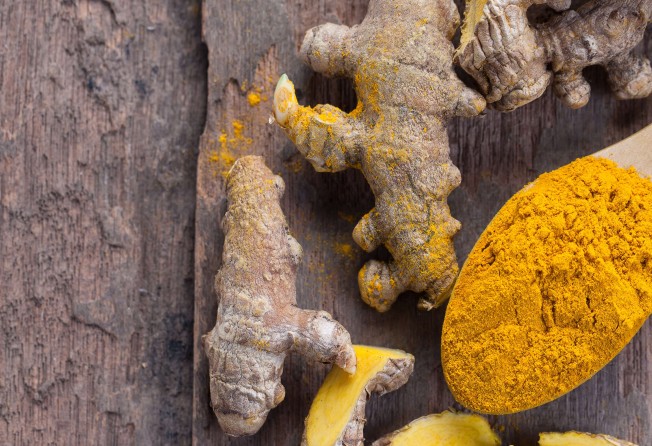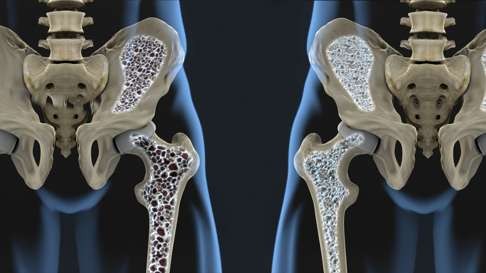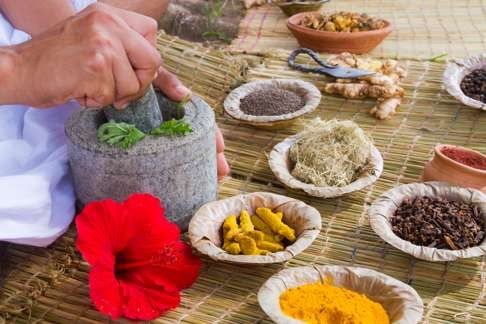
Turmeric: the wonder food that should be every Hongkonger’s cup of tea
The yellow root from South Asia is a well known ingredient in curries and Middle Eastern dishes and has a large number of health benefits

Turmeric is popularly used to give curry a yellow hue, but in one restaurant in Hong Kong, the spice is being added to lattes – and consumers have reportedly been lapping it up.
Peggy Chan, executive chef and managing director of Grassroots Pantry, says her restaurant on Hollywood Road sold an average of more than 50 turmeric chai lattes a day last winter. The popularity of the drink, she says, is related to an increasing awareness among people of what turmeric does for our health. The spice is one of the foods to watch out for in 2016, according to market research firm Mintel.
Around the world, in cafes from Sydney to San Francisco, the turmeric latte (also called “golden milk”) has been trending this year. The anti-inflammatory concoction of juiced turmeric root and coconut, almond or cashew milk is being touted as a healthy alternative to caffeine drinks.

Google’s latest Food Trends Report has found that searches for turmeric have increased by 300 per cent over the last five years.
While the West is only now warming up to the health benefits of turmeric, it has a long history of medicinal use in South Asia and is widely used in ayurvedic and traditional Chinese medicine.
A perennial plant native to southern Asia, the turmeric root looks quite similar to ginger, but its skin is rougher and the flesh is bright yellow-orange. A natural dye, apparently it was referred to in medieval Europe as Indian saffron and used as a cheaper alternative to saffron.

According to Anna Foley, a nutritionist at Nutrition Nation in Hong Kong, turmeric is an excellent source of iron, manganese, Vitamin B6, dietary fibre and potassium. Various studies and research findings have corroborated the efficacy of this ancient spice.
Researchers at the University of Arizona College of Medicine have found it to be effective in the prevention of both rheumatoid arthritis and osteoporosis. A study conducted on patients with Alzheimer’s disease by researchers at the Department of Medicine of the University of California, Los Angeles proved that bisdemethoxycurcumin, the most active ingredient in turmeric root, boosts the immune system activity of those suffering from Alzheimer’s, allowing them to clear the amyloid beta plaques built up in the brain which is characteristic of the disease. Another study conducted by Dr Alok Mishra of Emory University, Atlanta in the US, found turmeric to have antiviral and anti-cancer properties.
While supplemental turmeric is available in the form of capsules, it’s best consumed in its natural form. In fact in some countries like India, Sri Lanka and Bangladesh, it is common to begin a meal with a small piece of raw turmeric.

Michelle Lau, certified nutritionist and nutrition educator at Nutrilicious, says including turmeric in cooking is a great way to reap its anti-inflammatory and antioxidant benefits. It’s easy on the waistline: one teaspoon of turmeric powder contains only nine calories.
Whole and ground dried turmeric are available in the spice section of some grocery stores or speciality stores. However, the curcumin content of turmeric and curry powders varies considerably. Turmeric powder has the highest curcumin concentration (averaging 3.14 per cent by weight).
While there is currently no clear recommendation for curcumin dosage, the University of Maryland Medical Centre suggests one to three grams of dried, powdered turmeric root per day is needed to gain health benefits.
Though not a common ingredient in Chinese cuisine, it can still be incorporated in one’s diet in creative ways. Foley recommends adding it to egg salads, or try mixing brown rice with raisins and cashews and seasoning it with turmeric, cumin and coriander. It can also be added to steamed cauliflower for a healthy snack or side dish. It’s almost always added to South Asian and Middle Eastern lentil dishes, and gives a pleasing orange hue to salads when added to dressings.
Denise Fair, accredited dietitian at Central Health Medical Practice, recommends turmeric tea, turmeric eggs for breakfast or curried carrot soup. She says it can also be added to stir fries, stews, soups and casseroles, and used as a marinade or rubbed on meats prior to cooking.
But could too much of a good thing harm you? Yes, turmeric could exacerbate gall bladder problems, slow blood clotting, decrease blood sugar in diabetes patients, cause stomach upsets and even prevent the absorption of iron. “But only if taken in very large doses of more than five teaspoons a day for an aindividual, which is hard to achieve as turmeric is only really used in small amounts for large dishes,” says Foley.
Try making your own turmeric latte at home. All you need is a quarter of a teaspoon turmeric powder, a small knob of grated ginger and a cup of hot milk. Steep the grated ginger in hot water for three minutes, then strain into a glass with the turmeric powder, stir well and top up with milk – cow’s, coconut, soy and almond milk all work well. Raise a glass to this superfood spice.